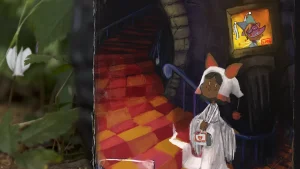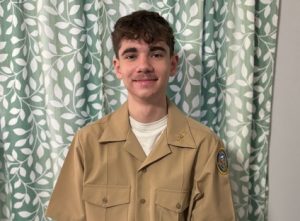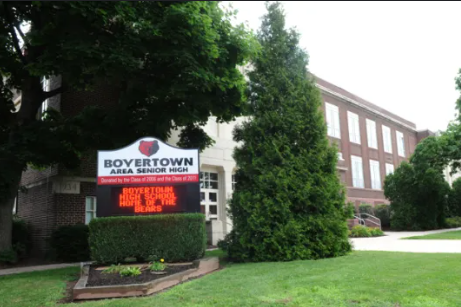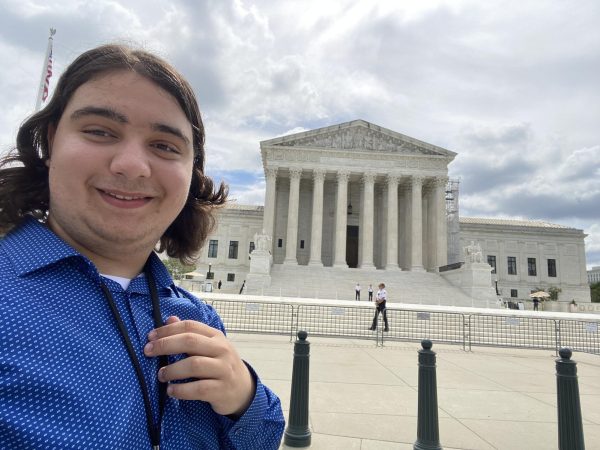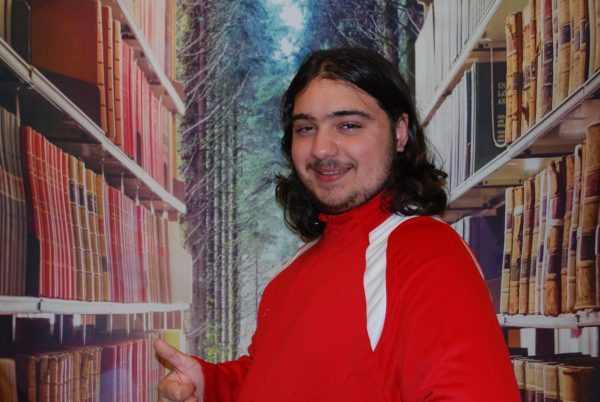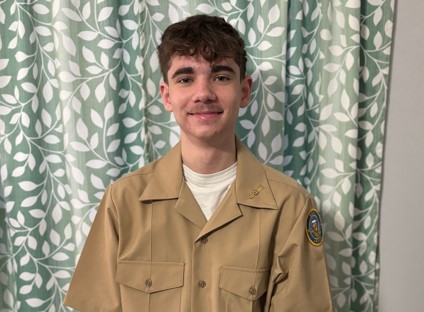Holocaust Survivor Speaks to Students
Mr. Tuck was ten years old when Germany invaded Poland. Throughout his presentation, he told his story.
Tuesday afternoon, 10th grade social studies classes and some others were invited to watch Holocaust survivor Mr. David Tuck tell his story and give advice.
He told students to focus on the positive in life rather than be negative, Freshman Grace Eicherly said.
“He told us to work hard in school, to appreciate it,” she said.
He also told the students to not let what others have done to them ruin their lives.
“He said he forgot about his past,” Grace said “He said [the Nazis] wanted him to remember. That’s what they want him to do, so he wasn’t going to do it. And that’s what kids should do about bullying… you’re not the one with the problem. They are.”
According to a biography written by the Holocaust Awareness Museum and Education Center , Mr. Tuck was raised by his grandparents in Poland. Shortly after the German’s invaded Poland, Mr. Tuck and his family were deported to the Lodz ghetto, a slum in Poland, where he worked at the food ration office selling ration cards. He was later deported to Posen, a concentration camp in Poland.
In 1943, Mr. Tuck was sent to another concentration camp, instructed to build an autobahn. From there, he was sent to Auschwitz, arriving on August 25, 1943. At Auschwitz he worked in a factory building anti-aircraft guns.
Grace said Mr. Tuck talked about how he survived the camps by lying.
“He lied and said he was 15 when he was 10, because they were killing all the children,” she said. “He lied about his age to survive.”
Mr. Tuck also suffered a 370-mile journey to the labor camp Mauthausen in Austria. He had to use snow to survive. From there, he was sent one last time to Gusen II, an underground German aircraft factory. Following America’s liberation of Gusen II on May 5, 1945, Mr. Tuck spent months recuperating. At the time of liberation he weighed only 78 pounds. Mr. Tuck then immigrated to U.S. in 1950.
Senior Emma Pisarik said one of the most memorable moments in the talk was “the tattoo from the holocaust that he showed us.”
As he showed students the concentration camp identification number on the inside of his arm, he described how much the tattoo hurt.
“I don’t know how you guys choose to do that now,” he said.
Originally meant to be viewed by all grade levels either in the auditorium or on student news, the video of Mr. Tuck’s presentation will be made available to social studies teachers as an option to show their students.

Jocelyn is a graduate of BASH. She served three years in the CUB and she previously wrote for the East Observer. She was in many clubs, such as SADD, Stage...


